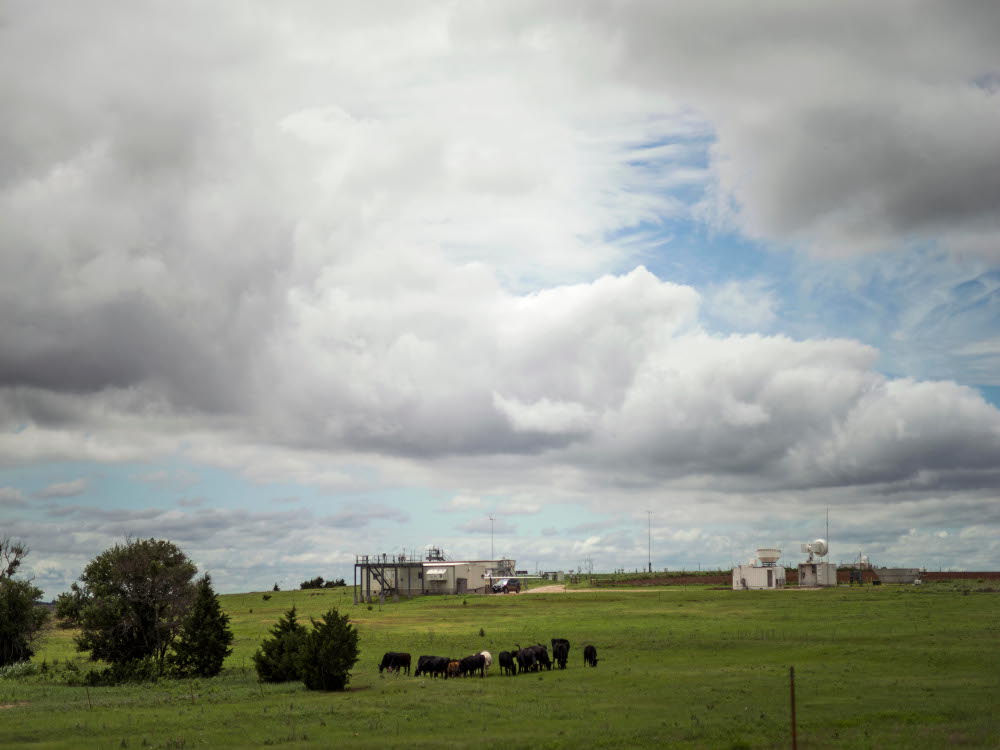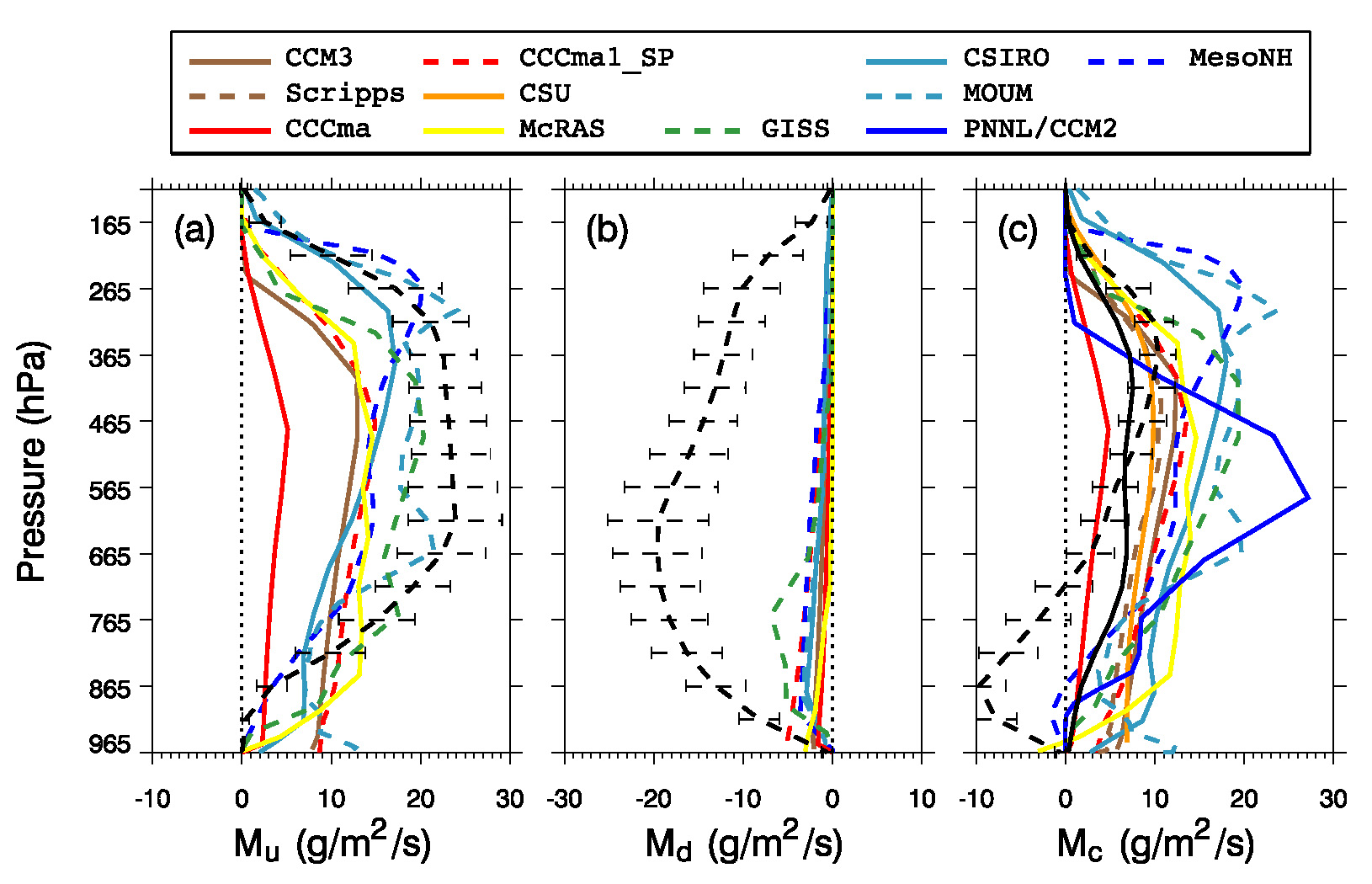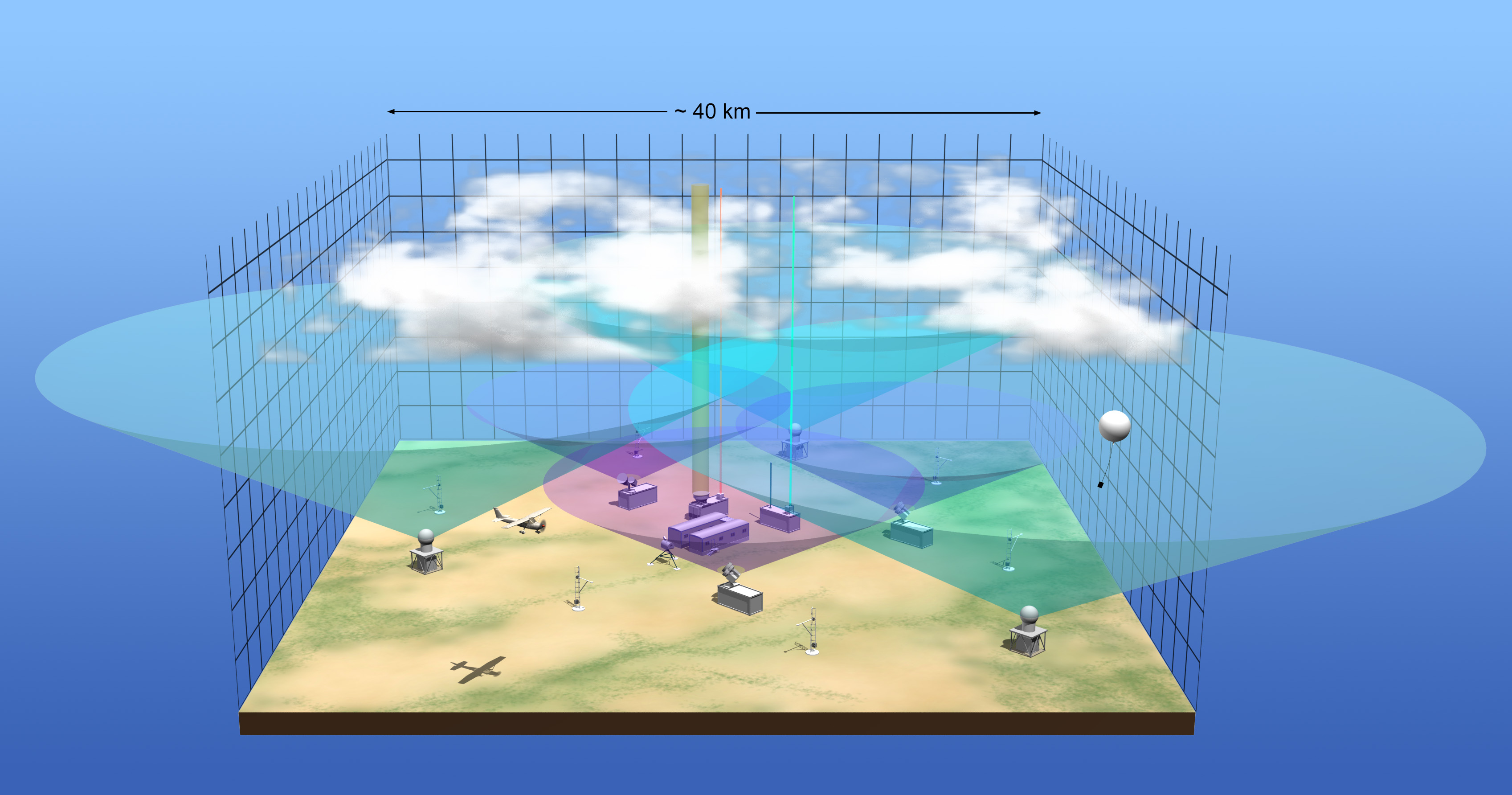A venerable single-column model intercomparison based on field data from 1997 persists as a big player in atmospheric science’s modeling literature

For longevity in the realm of atmospheric science, look no further than the Atmospheric Radiation Measurement (ARM) intercomparison case, also known as ARM97 – Deep Cumulus Convection.
This single-column model (SCM) intercomparison of cumulus convection developing over land, formulated in 1999, is based on field data from the summer of 1997. The ARM case, a way to test models, has persisted in modeling literature for 25 years.
The official name of the case is a long one: the ARM/Global Energy and Water Cycle Experiment (GEWEX) Cloud System Study (GCSS) SCM Intercomparison, Case 3: Summer 1997 SCM Intensive Observation Period (IOP).
The GCSS was established as a GEWEX subprogram within the World Climate Research Programme. Part of the GCSS mission is to test model parameterizations, which are simplified representations of atmospheric physics.
Despite its long official name, the ARM case is so well known that it is sometimes mentioned in publications “with no explanation,” says atmospheric scientist Jennifer Comstock. “Every modeler knows it.”
Comstock is the associate director for research for ARM, a U.S. Department of Energy (DOE) Office of Science user facility.
“The ARM case is always there. It really is where modelers start. Then they branch out to other things.”
She kept bumping into the case while preparing for ARM’s next Triennial Review, when a panel of external experts will evaluate the user facility’s effectiveness in science, operations, and management. (The next review will take place in January 2025.) Her task included a literature search to understand ARM’s impact on model development and evaluation.
ARM’s modest operational start at collecting data began in 1992 in Oklahoma. Since then, it has run field campaigns on every continent and expanded to six atmospheric observatories in climate-critical regions of the world. ARM’s present trove of data tops 7 petabytes. Yet, one modeling case that seemed to be everywhere took an ARM veteran like Comstock by surprise.
“The ARM case is always there,” she says. “It really is where modelers start. Then they branch out to other things.”
SCM Uses and Advantages

An SCM is a single grid column of a global climate model (GCM) that extends from the surface of the Earth to the top of the atmosphere. An SCM is governed by the same equations as its parent GCM. These equations determine how the primary variables being modeled evolve over time.
Because an SCM has no neighboring grid columns, it employs external “forcings” (estimates) to represent the fluid-like horizontal and vertical movement of variables such as temperature and water vapor. Such forcings are estimated based on direct observations of the atmosphere inside and outside the column.
The SCM also has the same physical parameterizations as the parent GCM but can also include other parameterizations to be tested. Parameterizations use known information in the model to estimate the effect of unknown physical processes in the model.
SCMs are valuable for testing and improving parameterizations by evaluating them against direct observations. In this way, SCMs help identify parameterization errors and uncertainties.
“When you evaluate a new microphysics package,” for example, says Comstock, “you do that with a single-column model framework. Then you test it in the large-scale model.”
SCMs can also be run side by side with cloud-resolving models (CRMs), which happens in the ARM case. CRMs provide a higher-resolution, more detailed picture of atmospheric conditions.
CRMs are computationally expensive to run in global models. But when forced with the same set of observations as SCMs, CRMs can “resolve,” or closely estimate, hard-to-observe cloud-field dynamics, cloud mass fluxes, and cloud microphysical properties. In this way, CRMs are useful for diagnosing problems with SCM cloud parameterizations.
A Gift From 1997

The ARM case, born out of a collaboration between ARM and GCSS working groups, was first detailed in a pair of key 2002 papers: one led by Shaocheng Xie and the other led by Kuan-Man Xu.
Both papers were very well received by the modeling community, says Xie, a climate modeler at Lawrence Livermore National Laboratory in California. He has been active in ARM modeling circles since 1998.
As of mid-August 2024, the 2002 ARM case papers have been cited a total of 369 times: 152 for Xie and 217 for Xu.
The ARM case is based on data from a summer SCM IOP led in June and July 1997 by David Randall of Colorado State University at ARM’s Southern Great Plains (SGP) atmospheric observatory.
Two years before, Randall had executed a first such SCM IOP at the SGP, which yielded a case called ARM95, described in a 2000 paper.
Randall’s 1995 IOP was the first in a series of experiments designed to compare ARM data on continental convection to model simulations.
The 1995 experiment “got our feet wet,” says 34-year ARM veteran Ric Cederwall, a co-author of the Xie and Xu papers.
The Xie paper used data from Randall’s summer 1997 IOP to compare cloud mass fluxes computed from SCMs with fluxes computed from CRMs.
The comparison showed that SCMs significantly underestimate downdraft mass fluxes, which are important for accurately representing downdrafts in cumulus parameterizations. Downdrafts suppress convection by cooling and drying the sub-cloud layer.
‘A Numerical Laboratory’

Today, Cederwall works for the ARM Data Center at Oak Ridge National Laboratory in Tennessee. He looks back at the summer 1997 IOP as “a well-documented period, with frequent radiosonde launches at four boundary locations and a central location.”
Radiosonde data from 1,080 launches documented the modeled column of atmosphere in the ARM case and solidified forcing data sets for running models. In both ARM95 and ARM97, forcing data were derived using a constrained objective variational analysis method developed by Minghua Zhang and described in a 1997 paper he led. In turn, Xie used this statistical tool to process the ARM IOP data, as described in a 2001 paper also led by Zhang. (Again, Cederwall was a co-author.)
Zhang’s variational analysis method significantly reduces the sensitivity of the resulting derived forcing fields to uncertainties in upper air input data.
“We were really working hard to make a single-column model almost like a numerical laboratory, supported by ARM data,” says Cederwall. “The whole goal was to improve the parameterizations for clouds and radiation and their interactions in global climate models.”
The summer of 1997 was favorable in other ways, he adds. Few big storm systems moved through to complicate local conditions.
The grid domain used in 1997 was also a good size—about 300 kilometers on each side (almost 190 square miles). In addition, the meteorological regime—the transition from shallow to deep cumulus over land—was of interest to modelers and those who develop parameterizations. The mechanisms that control this transition determine how soon and how heavily it will rain.
In all, the summer of 1997 at the SGP generated “a pretty rich data set for modelers,” says Cederwall. “They kind of love it.”
An LES Golden Day
In April 2002, Cederwall co-authored yet another highly cited paper linked to data from Randall’s summer 1997 IOP.
A different case featured in that paper—ARM GCSS – Diurnal Cycle of Continental Shallow Convection—drew on data from a June 21, 1997, “golden day,” a term modelers reserve for days when conditions are just right for developing simulations.
“Large-eddy simulation of the diurnal cycle of shallow cumulus convection over land,” with U.K. meteorologist Andrew “Andy” R. Brown as lead author, appeared in the Quarterly Journal of the Royal Meteorological Society. It introduces a large-eddy simulation (LES) case informed by ARM97.
LES is a numerical tool that mathematically simulates turbulence within the atmosphere. Such motion, often in the form of fluid-like small eddies, is the chief means of transporting heat and moisture throughout the boundary layer, where the atmosphere meets the surface.
The GCSS working group, Cederwall remembers, put ARM in touch with Brown and the U.K. Met Office. From there, Brown looked at the 1997 ARM data Cederwall gave him from the SGP, liked them, and made them into what is now a famous LES case related to a famous SCM case.
Like the ARM case, the Brown et al. paper seems to pop up everywhere. As of mid-August 2024, it has been cited 374 times. About a third (126) of those citations appeared from 2019 onward.
‘Good Forever’
“If you collect data correctly, the atmosphere doesn’t get old. Then, if you correctly describe it, it’s good forever.”
Brown is now director of research at the European Centre for Medium-Range Weather Forecasts (ECMWF). In an email, he described the golden-day LES study as one among “a number of intercomparison cases” being done at the time by the GCSS working group. “It’s so pleasing that they seem to have stood the test of time.”
In another example of their enduring value, ARM95, ARM97, and the LES case are all part of a DOE Energy Exascale Earth System Model (E3SM) library of IOP cases that modelers may want to run. The E3SM library also includes more recent ARM cases.
Back in the era that produced the older cases, ARM was very new and still establishing its operational identity, says Cederwall. “We were living in a house that was still being built.”
However, the long life of ARM97—the ARM case—alone shows how sound that house was from the start.
“If you collect data correctly, the atmosphere doesn’t get old,” says Cederwall. “Then, if you correctly describe it, it’s good forever.”
The durability of the ARM case is satisfying on a personal level too, for all the observationalists and modelers involved, adds Cederwall. “A lot of times you do work, and then it’s forgotten and never used again.”
Longevity and Utility

Starting in 2015, ARM began developing a library of high-resolution simulations focused on SGP shallow convection as part of the LES ARM Symbiotic Simulation and Observation (LASSO) activity. (LASSO now covers a far wider range of cloud regimes, with plans for further expansion.)
In any regime, LASSO helps test climate model parameterizations by combining ARM observations with LES modeling to provide highly detailed descriptions of the atmosphere around ARM sites and during ARM field campaigns.
Compared to CRMs, LES provides even finer resolution. It resolves not only detailed cloud structures but also atmospheric turbulence. Like CRMs, LES results can be used to identify parameterization deficiencies in SCMs.
As Cederwall says, the ARM case will no doubt live on in the modeling community. However, in the coming years, ARM believes its growing library of LASSO cases will enjoy the same kind of longevity and utility.
# # #Author: Corydon Ireland, Staff Writer, Pacific Northwest National Laboratory
ARM is a DOE Office of Science user facility operated by nine DOE national laboratories.

